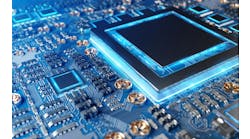The number of engineers that see cost or power as an obstacle to increasing onboard processing in their designs has halved from 2021 levels, according to new research from semiconductor specialists XMOS.
The research also shows that the lessening of these barriers is driving significant movement in the artificial intelligence of things (AIoT) market. The majority of the engineers surveyed are actively adopting increased on-device processing into their designs. 70% stated that most of their planned products would require “high” or “very high” onboard processing capabilities.
The Edge of Now – the third in a series of annual reports examining engineers’ attitudes towards the AIoT – highlights a significant decrease in the perceived barrier of the on-device processing capabilities required to enable the AIoT. Separately, the report found that just 24% of engineers now see cost as a barrier to increasing the on-device processing in their designs. That’s half of the 48% from last year’s report, and down from 64% in 2020.
That optimism also applies to power consumption. Just 23% of engineers see power as a barrier to increasing onboard processing – a drop of more than half from 53% last year, and from 65% the year before.
Given the importance of this higher processing power to enabling on-device AI functionality, it’s no surprise to see engineers reporting that cost and power are also becoming less of a barrier to adopting AI functionality in their designs. Only 16% now see cost as a barrier to the adoption of the AIoT, while barely a tenth (13%) see power requirements as a blocker to introducing AI to their products.
“Conducting this research year-on-year gives us a really powerful sense of the AIoT’s progress – momentum is building as fears and concerns about barriers are starting to melt away,” said Mark Lippett, CEO, XMOS. “The normalization of devices like smart speakers have made AI a more comfortable reality, even for consumers who have no technical expertise.
“However, these design challenges are mitigated – not eliminated," Lippett continued. "User experiences still have a long way to go - we need to empower engineers to keep smashing through barriers to adoption, which means providing them compelling capabilities running on versatile, low-power silicon at a price that makes the mass-proliferation of AIoT-enabled devices a realistic ambition.”



